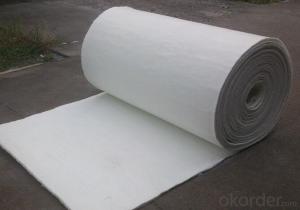When it comes to home insulation, one of the most cost-effective and efficient options available is EPS foam board insulation. This lightweight, versatile material is a popular choice for many homeowners and contractors alike. But what exactly is EPS foam board insulation, and why should you consider it for your next home improvement project? Let’s dive in and explore the benefits, installation process, and potential drawbacks of this popular insulation material.
What is EPS Foam Board Insulation?
EPS, or Expanded Polystyrene, is a type of foam insulation that is made from polystyrene beads that are expanded with a special blowing agent. This creates a rigid, closed-cell structure that provides excellent thermal insulation. EPS foam boards are typically white and come in various thicknesses and sizes, making them suitable for a wide range of applications.
Benefits of EPS Foam Board Insulation
One of the main benefits of EPS foam board insulation is its affordability. Compared to other insulation materials, EPS foam boards are relatively inexpensive, making them an attractive option for homeowners looking to save money on their insulation project. Additionally, EPS foam boards are easy to install, which can save time and labor costs.
Another advantage of EPS foam board insulation is its excellent thermal performance. With an R-value ranging from 3.6 to 4.2 per inch of thickness, EPS foam boards provide superior insulation compared to many other materials. This can help reduce energy consumption and lower heating and cooling costs in your home.
EPS foam boards are also moisture resistant, which makes them suitable for use in damp or humid environments. They are also resistant to mold, mildew, and pests, ensuring a healthy living space for you and your family.
Installation Process
The installation process for EPS foam board insulation is relatively straightforward. First, you’ll need to measure the area you want to insulate and purchase the appropriate amount of EPS foam boards. Once you have your materials, you can begin the installation process.
1. Prepare the Surface: Clean the surface where you’ll be installing the EPS foam boards. Remove any debris, dust, or dirt to ensure proper adhesion.
2. Apply Adhesive: Use a construction adhesive to secure the EPS foam boards to the surface. Apply the adhesive evenly and press the foam boards firmly into place.
3. Cut to Fit: If necessary, use a utility knife to trim the EPS foam boards to fit the specific contours of your space.
4. Seal the Edges: To prevent air infiltration, seal the edges of the EPS foam boards with a foam sealant.
5. Finish the Job: Once the EPS foam boards are in place, you can cover them with a layer of drywall or another finishing material to complete the installation.
Potential Drawbacks
While EPS foam board insulation offers many benefits, there are also some potential drawbacks to consider. One concern is the environmental impact of EPS foam boards, as they are made from petroleum-based materials and are not easily recyclable. Additionally, EPS foam boards have a lower compressive strength compared to some other insulation materials, which may make them less suitable for certain applications.
Choosing the Right EPS Foam Board Insulation for Your Home
When selecting EPS foam board insulation for your home, it’s important to consider the specific needs of your project. Factors such as the climate you live in, the size of your home, and the areas you want to insulate will all play a role in determining the right type and thickness of EPS foam board insulation for you.
Conclusion
EPS foam board insulation is a cost-effective and efficient solution for homeowners looking to improve their home’s energy efficiency and comfort. With its affordability, ease of installation, and excellent thermal performance, it’s no wonder that EPS foam board insulation is a popular choice. However, it’s important to weigh the benefits against the potential drawbacks and choose the right insulation material for your specific needs. By doing so, you can ensure that your home is well-insulated and comfortable for years to come.

